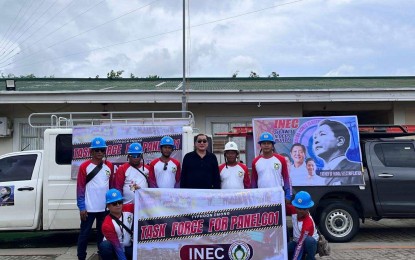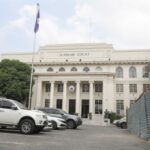LAOAG CITY – The Ilocos Norte Electric Cooperative (INEC) announced it will send seven linemen and a foreman to Pangasinan to assist in restoring electricity in areas left without power after Typhoon Emong.
INEC confirmed the deployment, stating the team will help repair toppled transmission lines for at least one week.
“The team sent by INEC is a voluntary initiative through our acting general manager,” the statement said.
“This is INEC’s way of giving back, as Ilocos Norte was largely spared from the worst impacts of Emong,” the official added during the send-off.
The team will be stationed in Bani, Pangasinan, one of the hardest-hit areas.
Other electric cooperatives from across the country had also deployed personnel to typhoon-hit areas.
As of today, several areas of Pangasinan remained without electricity as the customer-owned Palamis-Bolinao 69kV line serving PANELCO (Dasol, Bani, Concordia, and Tara substation) experienced power cuts due to the destructive typhoon.
PANELCO 1 expressed gratitude to INEC, noting their swift response despite also being affected by the storm.
Meanwhile, Ilocos Norte reported minimal damage from Emong, aside from a tornado that damaged homes in Paoay on Saturday. No casualties have been reported.
Pangasinan
Pangasinan is a province in the Philippines located on the island of Luzon, known for its rich cultural heritage, scenic beaches, and the Hundred Islands National Park, a popular tourist destination. Historically, it was a significant trading hub before Spanish colonization in the 16th century and played a role in the Philippine Revolution against Spain. The province is also famous for its traditional crafts, vibrant festivals like the *Pista’y Dayat* (Sea Festival), and its distinct language, also called Pangasinan.
Bani, Pangasinan
Bani, a coastal municipality in Pangasinan, Philippines, is known for its scenic beaches, such as the popular Tondol White Sand Beach, and its rich agricultural heritage. Established in 1764, the town has historical ties to Spanish colonial rule and is home to landmarks like the St. Anthony of Padua Parish Church. Today, Bani attracts visitors with its natural beauty, fishing industry, and vibrant local festivals.
LAOAG CITY
Laoag City is the capital of Ilocos Norte in the Philippines, known for its rich history and Spanish colonial heritage. Established in 1580, it features landmarks like the sinking **St. William’s Cathedral** and the iconic **Sinking Bell Tower**, both dating back to the Spanish era. The city is a gateway to the Ilocos Region’s cultural and historical attractions, blending traditional charm with modern development.
Ilocos Norte
Ilocos Norte is a province in the northern Philippines known for its rich history, Spanish colonial architecture, and stunning landscapes. It was a significant center during the Spanish colonial era and is home to well-preserved heritage sites like the Paoay Church (a UNESCO World Heritage Site) and the Malacañang of the North. The province is also famous as the birthplace of former Philippine President Ferdinand Marcos, whose legacy is reflected in landmarks such as the Marcos Museum and Mausoleum.
Paoay
Paoay is a town in the Ilocos Norte province of the Philippines, renowned for the historic **Paoay Church** (St. Augustine Church), a UNESCO World Heritage Site. Built in 1694 and completed in 1710, the church is a stunning example of **Earthquake Baroque** architecture, designed to withstand seismic activity with its massive buttresses. The town also features the nearby **Paoay Lake**, a scenic natural attraction.
Palamis-Bolinao 69kV line
The **Palamis-Bolinao 69kV line** is an electrical transmission line in the Philippines, connecting the towns of Palamis and Bolinao in Pangasinan province. It was constructed to improve power distribution in the region, supporting local communities and economic activities. While not a cultural site, it plays a key role in infrastructure development in northern Luzon.
PANELCO
PANELCO, or the Pampanga Electric Cooperative, is a key electric utility provider in Pampanga, Philippines, established in 1973 under the National Electrification Administration’s rural electrification program. It was created to bring reliable electricity to the province’s households and businesses, playing a vital role in Pampanga’s economic growth. Over the years, PANELCO has expanded its services and infrastructure, adapting to the region’s increasing energy demands.
Dasol
Dasol is a coastal municipality in the province of Pangasinan, Philippines, known for its pristine beaches, therapeutic saltwater springs, and lush natural scenery. Historically, its name is derived from “dagang mapusok” (hot salt), referencing its salt-making industry, which has been a traditional livelihood for locals. Today, Dasol attracts tourists for its unspoiled beauty, particularly Tambobong Beach and the salt farms that highlight its cultural heritage.






